Roe Deer Observation Center (제주 노루생태관찰원)
13.1 Km 16765 2020-12-03
520, Myeongnim-ro, Jeju-si, Jeju-do
+82-64-728-3611
Roe Deer Observation Center opened on August 3, 2007 to offers a place where visitors may observe and watch roe deer and other creatures in their natural habitat. Guests can watch the deer from the forest trails, or feed them at the experience enclosure. The exhibition hall offers information on Hallasan Mountain and the animals and plants that live around it, including a video room teaching about the life of a roe deer. The observation center grounds also include walking paths up Geochinoreum Volcanic Cone.
Jeju National Museum (국립제주박물관)
13.5 Km 27439 2021-08-06
17, Iljudong-ro, Jeju-si, Jeju-do
+82-64-720-8000
Opened on June 15, 2001, Jeju National Museum is a history museum that displays, preserves and studies Jeju Island’s historical and cultural assets. Jeju National Museum houses various remains excavated from ruins, including meaningful relics from the prehistoric age through to the Joseon dynasty. It boasts unique traditional culture and holds special exhibitions each year.
Sanji Lighthouse (산지 등대)
13.5 Km 35329 2021-03-18
108-1, Sarabongdong-gil, Jeju-si, Jeju-do
+82-64-740-6000
The name Sanji derives from the area being recorded as Sanjichon Village, literally translated as the mountainous village, in Tamna Sullyeokdo, a book of paintings showing life in Jeju. This record was created in 1702 by painter Kim Nam-gil, under the command of the Jeju Province governor, Lee Hyeong-sang.
Sanjicheon Stream originates from Hallasan Mountain and empties itself into the sea. Sitting halfway up Sarabong Peak, one of the signature parks on Jeju-do island, Sanji Lighthouse overlooks the port of Jeju.
Sarabong Park (사라봉공원)
13.6 Km 19959 2020-03-19
74, Sarabongdong-gil, Jeju-si, Jeju-do
+82-64-728-4643
Sarabong Park is located on a 143 meter-high hill just east of Dongmun Rotary in Jeju. The park is best known for its spectacular sunset views, which is often regarded as a perfect complement to Seongsan Ilchulbong Peak's view of the sunrise.
Sarabong Park offers a spectacular view of the expansive blue waters to the north and Hallasan Mountain to the south, making it popular among locals and tourists alike. Visitors traveling by bus will see Mochungsa Temple on the way to the park. Byeoldobong Peak lying to the east features a paragliding runway. At the foot of Sarabong is Udang Library. The road from the library, passing behind Sarabong Peak to Jeju Harbor and to Tapdong provides a very scenic driving route.
Sarabong Peak (사라봉)
13.6 Km 19826 2021-05-24
61, Sarabongdong-gil, Jeju-si, Jeju-do
+82-64-728-3602
Situated to the east of Jejuhang Port, Sarabong Peak is the main oreum (volcanic cone) that separates the city from the sea. The peak offers views of the ocean to the north and magnificent Hallasan Mountain to the south. It is recommended to reach the top in the late afternoon to catch the reddish glow of the sunset glittering off the ocean.
Jeju Jeolmul Recreational Forest (제주절물자연휴양림)
13.6 Km 44696 2023-01-17
584, Myeongnim-ro, Jeju-si, Jeju-do
+82-64-728-1510
Jeju Jeolmul Recreational Forest opened on July 23, 1997. The forest is comprised of both a natural Japanese cedar forest and a man-made forest. The combination of the sea breeze and the shade of the forest canopy over the walking paths make it a cool attraction all year round.
The recreational forest features a promenade, waterfall, pond, grass square, wood-crafting studio, and more. There are forest cabins available for lodging.
Myeongjin Jeonbok (명진전복)
14.0 Km 34 2024-03-18
1282 Haemajihaean-ro, Gujwa-eup, Jeju-si, Jeju-do
+82-64-782-9944
Myeongjin Jeonbok specializes in fresh abalone dishes, using abalones sourced directly from its adjoining farm. The menu features a variety of offerings including jeonbok gui (grilled abalone), jeonbokjuk (abalone porridge), jeonbokhoe (sliced raw abalone), and jeonbok dolsotbap (abalone hot stone pot rice). Ther restaurant's signature dish is the jeonbok dolsotbap (abalone hot stone pot rice), a savory hot stone pot rice topped with abalone, pumpkin, and sweet potatoes. Having been featured on numerous TV shows, Myeongjin Jeonbok is popular among both locals and tourists.
Snoopy Garden (스누피가든)
14.0 Km 0 2024-03-20
930 Geumbaekjo-ro, Gujwa-eup, Jeju-si, Jeju
+82-64-903-1111
Snoopy Garden House is where visitors can meet Snoopy and friends from the popular American comic series "Peanuts." The themed halls designed under the overall theme of "Peanuts, Nature & Life" allows one to connect their everyday life through episodes from "Peanuts." Snoopy Garden House has a total of five themed halls and Peanuts Store.
Dotoreum Parasitic Cone (돛오름(돝오름))
14.0 Km 1 2023-12-22
San 3, Songdang-ri, Gujwa-eup, Jeju-si, Jeju-do
This oreum, or parasitic cone, is located southwest of Bijarim Forest. Its name “Dot” comes from the Jeju dialect for pig, as the shape of the peak is said to resemble a pig. Dotoreum Parasitic Cone is home to a wide variety of trees and plants, but among them, it is most well-known for its bija trees. However, paths in this parasitic cone tend to be rather narrow and rugged, so one must prepare accordingly in order to climb the hill without much trouble. Visitors are advised to prepare comfortable shoes and water at the very least.
Darangswi Oreum (Wollangbong Peak) (다랑쉬오름(월랑봉))
14.1 Km 15307 2020-05-06
San 6, Sehwa-ri, Jeju-si, Jeju-do
+82-64-740-6000
Located the Northeastern part of Jeju Island, Darangswi Oreum is a parasitic volcano that stands about 380 meters above sea level. From Darangswi Oreum, visitors can overlook tourist attractions such as Seongsan Ilchulbong (Sunrise Peak), Udo Island, Hallasan Mountain, coastlines, and various parasitic cones.
The mountain has an oval shape from south to north with a steep incline. The top has a large, deep funnel-shaped crater that still preserves its original shape unlike craters in cones. The name Darangswi is derived from the fact that the mountain looks like a moon ('Da' meaning 'Moon' and 'Swi' meaning 'Mountain' in the Jeju dialect).
Trees are scattered here and there at the top, and the outskirts of the mountain are decorated with cedar trees. Meadow plants such as Aster yomena populate most of the mountain. A gentle hill to the right of Darangswi Oreum is called Akkeun Darangswi Oreum (also called Sowol Nangak). Meaning 'small,' 'Akkeun' is both old Korean and Jeju dialect.
Darangswi Oreum hosts Wollang Peak Sunrise Festival every year allowing visitors to see the spectacular full moon from the crater. There are wooden stairs in place for easy ascent, and the mountain is also a popular site for paragliders.

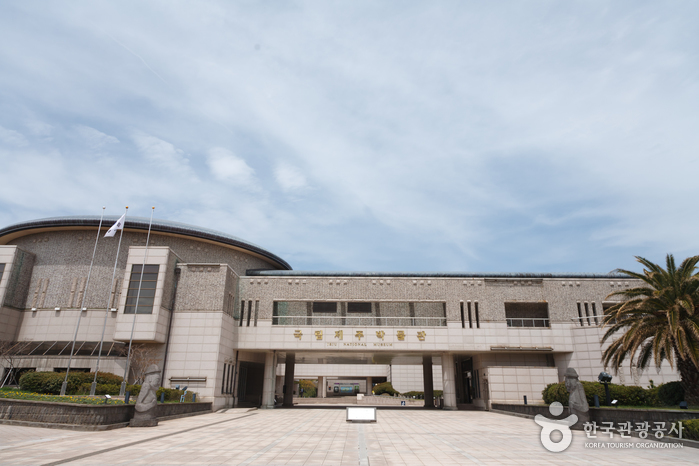
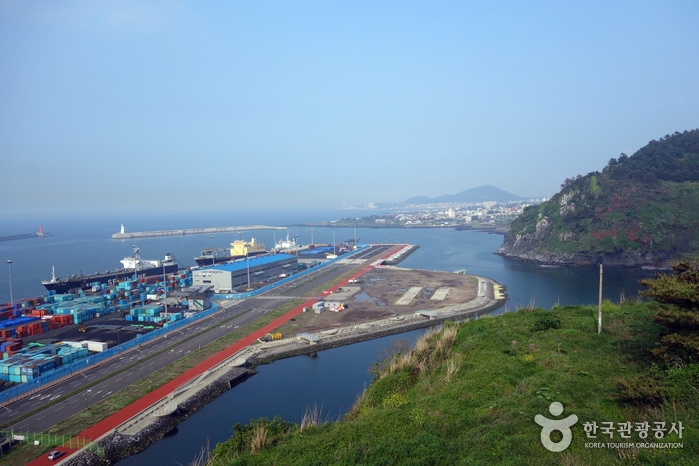
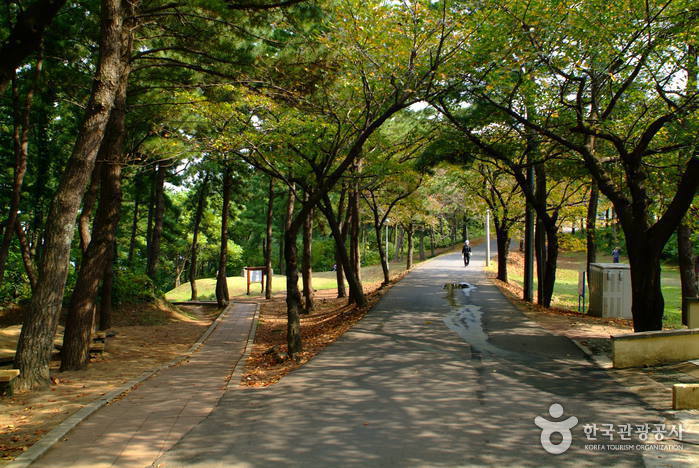
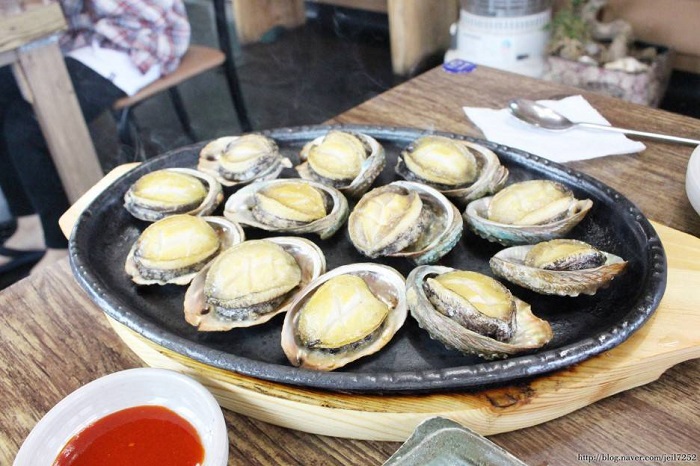
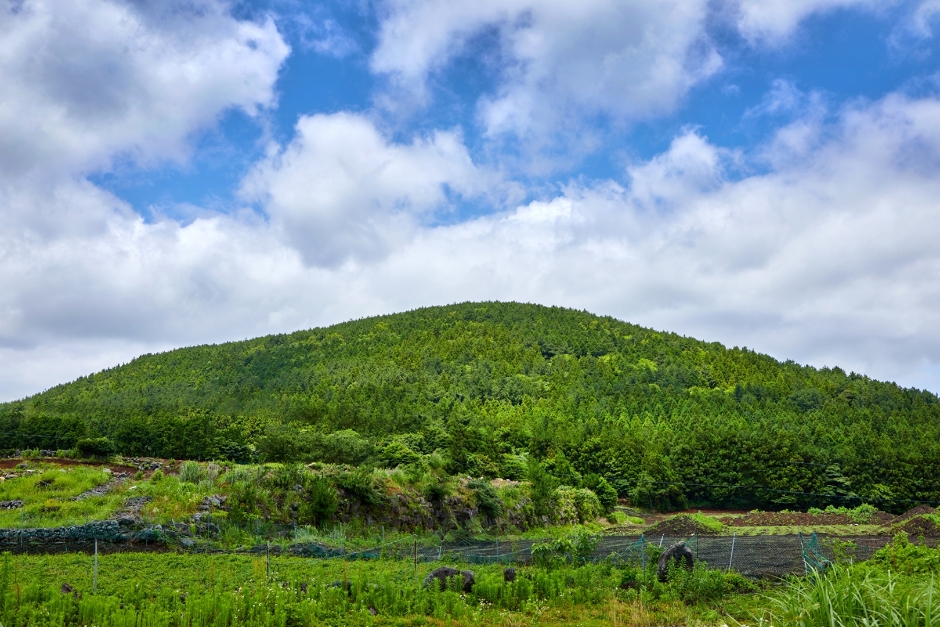
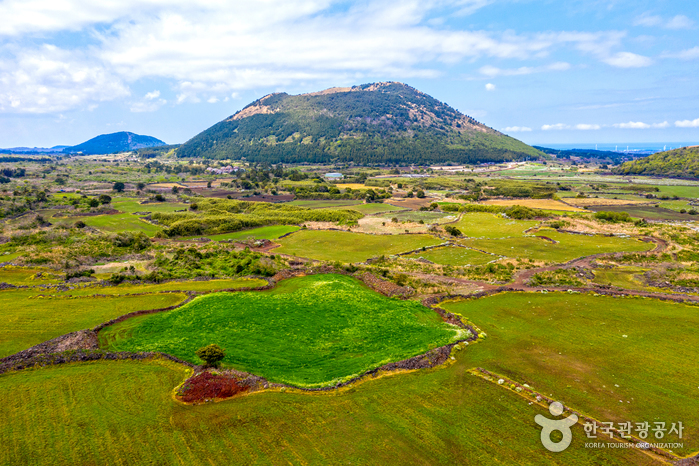
 English
English
 한국어
한국어 日本語
日本語 中文(简体)
中文(简体) Deutsch
Deutsch Français
Français Español
Español Русский
Русский